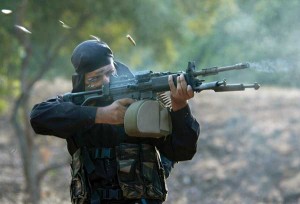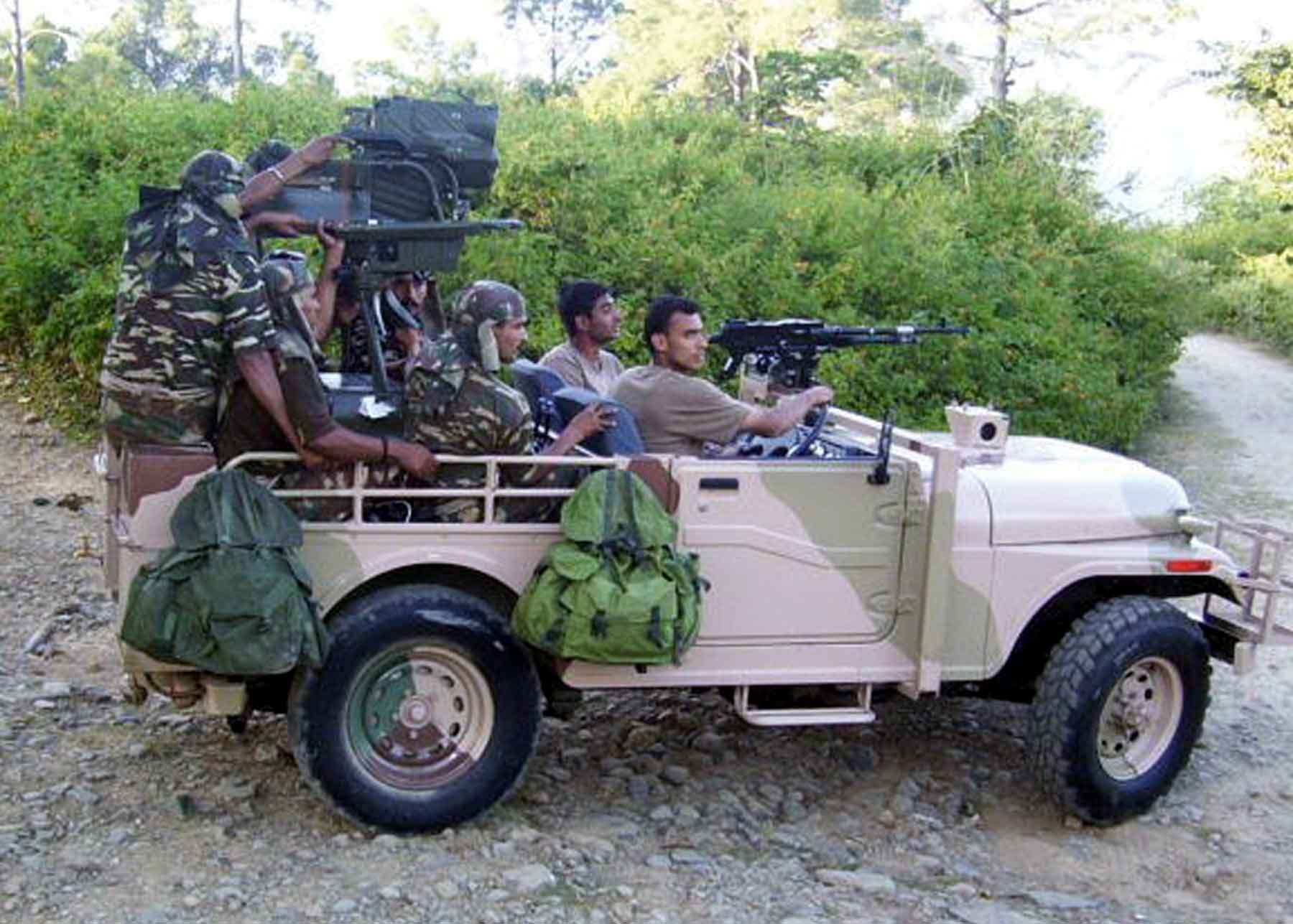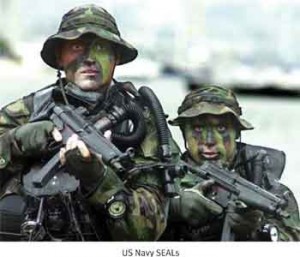The need for a unified headquarters for our SOF is an inescapable requirement as it will enable us to ensure optimum utilisation of resources. Not only will we be able to avoid duplication of resources but also ensure quicker responses and coordination of operations. It will also help us to standardize manpower management, weapons and equipment induction, training processes and infrastructure development. In addition, there is a need for raising a suitable intelligence establishment with the necessary capacity, both in technical and manpower terms, to provide real time actionable intelligence in the area where the forces are required to be deployed. Apart from the Special Frontier Force, all other military SOF units including all elements of the NSG, other than the Special Ranger Groups (SRG), must be placed under this tri-service headquarters. The SRGs should be located regionally so that they are able to respond and provide the outer cordon within an acceptable timeframe.
There has been much talk of establishing a Tri-Services Special Operations Command responsible for all Special Operations Forces (SOF)…
There has been much talk in the recent past of establishing a Tri-Services Special Operations Command that would be responsible for all Special Operations Forces (SOF). The necessity to move forward on this issue quickly cannot be over emphasized; but at the same time, there is a need for deeper and more realistic understanding of the capabilities required to be developed in the regime of Special Operations.
There is much criticism of the existing capability of the Indian SOF that are regarded as no better than ‘super infantry’ and do not have the ability to perform strategic politico-military tasks in third nations that call for deep penetration undercover by personnel to acquire actionable intelligence and neutralise prevailing threats. Examples of employment of SOF by the UK and USA over the past few years in Iraq, Syria and Afghanistan are cited as examples to highlight the vast ground that Indian SOF need to cover to build up similar capabilities. High profile examples that are invariably brought up showcasing our limited capability are with regard to the lack of options available to the government during the hijack of the Indian Airlines aircraft to Kandahar, the delayed and muddled response by the National Security Guard during the 26/11 attack on Mumbai and doubts about our ability to carry out an operation similar to the US assault that resulted in the killing of Osama Bin Laden. Before we focus on these specific issues at length, it may be worthwhile to get a better understanding of the existing capabilities of other countries, especially the US and UK that are at the forefront of such activity.
Employment of SOF
In countries of interest to the Western powers such as the US, like Pakistan for example, their SOF have been deployed with the tacit approval of the state concerned mainly in capacity-building or advisory roles. In these countries they have maintained a low profile and work under superficial cover identities, such as being shown as a part of international aid agencies working there. This ensures that the party in power is not subjected to any criticism either from the opposition or the general public on matters of sovereignty. Undoubtedly, in all likelihood, they would be also carrying out tasks such as intelligence gathering and internal situation assessments on behalf of their own government. It has been reported for example that US SOF personnel were deployed in Pakistan just after the 2005 earthquake as a part of first aid teams and were involved in such diverse tasks as identifying key locations holding Pakistan’s nuclear arsenal and photographing members of militant groups who were also involved in the aid effort. In countries that are riven by internal conflicts especially those in which US or Western expeditionary forces are in support of anti-government militia such as Iraq, Afghanistan, Libya or Syria, SOF have been working in tandem with rebel or insurgent forces in sub-conventional conflict or have carried out surveillance and interdiction strikes during hot war as such as targeting Scud Missile sites, rear area command and control infrastructure in Iraq and Taliban positions in Afghanistan.
However, where covert missions that require credible deniability and total non-attributability have been undertaken, the responsibility for their conduct has rested with the national intelligence agencies; the CIA for the US and the SAS of the UK. For example, the CIA has, within its National Clandestine Service, which is a part of its Special Activities Division, tactical units such as the Special Operations Group and the Political Action Group, manned by former SOF personnel who carry out a variety of covert activity in third countries. The British too follow a similar model.
Where covert missions require credible deniability and total non-attributability, the responsibility for their conduct has rested with the national intelligence agencies…
It is a fallacy, therefore, to believe that military SOF of these countries such as the SAS, Delta Force or SEAL Team Six are organised and trained for covert operations. These forces are, in fact, primarily tasked to carry out clandestine Strategic Reconnaissance (SR) and Direct Action (DA) missions such as the one carried out to neutralise Osama Bin Laden. In such employment even while secrecy is maintained to a very high degree, subsequent attributability to the US is not considered to be a matter of concern. There have, however, been numerous occasions, when elements of military SOF have been co-opted by the CIA/SAS to boost their capability to carry out covert missions. An example of this would be the induction of SOF along with the CIA paramilitary officers prior to the active involvement of US troops in Afghanistan, at a time when the Northern Alliance was being provided with weapons and equipment, intelligence and close air support in its war against the Taliban.
Capability Building
It goes without saying that a covert capability to carry out DA missions in our areas of interest is essential in our context. Obviously, for reasons better known to it, the Indian government has yet to develop credible capabilities of this nature; otherwise Pakistan would have been far more circumspect in its support of Jihadi elements in the region. Responsibility for developing such a credible capability must rest with the Research and Analysis Wing. They could set up a tactical unit, on lines similar to that followed by Western intelligence agencies, utilising former SOF personnel as required. Furthermore, creating such covert capabilities within the Indian military SOF, as has been suggested by some, would be an error not only because it is not permitted by the Third Geneva Convention of 1949 that clearly specifies the manner in which regular armed forces must operate, but also because of the adverse impact that will be generated if such personnel are apprehended and subsequently disowned by the state. One only has to look at the turbulence and angst caused within the army and civil society in Pakistan over their refusal to take back the bodies of regular personnel of the Northern Light Infantry during the Kargil Conflict.
If we leave out covert capability in the context of military SOF, it would then not be out of place to state that our SOF is organised, trained and equipped to be able to undertake the complete range of missions such forces need to be prepared for. However, there are serious structural lacunae due to the lack of an integrated command and control set up and the non-availability of a suitable intelligence support unit that would be able to provide specialised real time intelligence from technical and other sources that such forces require to be effective. The absence of a commander responsible for all SOF employment to provide professional advice to the political and military hierarchy at the highest level has been particularly debilitating and has adversely impacted on our ability to employ SOF in an integrated manner.
 The hijack of an Indian Airlines aircraft to Kandahar is a case in point. The Indian political leadership failed to provide the required response in the crisis as it had neither suitable professional advice nor a unified organisational structure that could have assisted in giving out the complete range of options available to ensure successful resolution of the situation. The DG NSG, being a police officer, was not in a position to offer any professional advice once the political decision to employ the NSG at Amritsar had been delayed. Moreover, the lack of joint forces made it impracticable to mount a rescue mission by the available SOF within an acceptable timeframe.
The hijack of an Indian Airlines aircraft to Kandahar is a case in point. The Indian political leadership failed to provide the required response in the crisis as it had neither suitable professional advice nor a unified organisational structure that could have assisted in giving out the complete range of options available to ensure successful resolution of the situation. The DG NSG, being a police officer, was not in a position to offer any professional advice once the political decision to employ the NSG at Amritsar had been delayed. Moreover, the lack of joint forces made it impracticable to mount a rescue mission by the available SOF within an acceptable timeframe.
The covert capability to carry out Direct Action missions in our areas of interest is essential…
The need for a unified headquarters for SOF is thus an inescapable necessity as it will enable optimum utilisation of resources. Not only will we be able to avoid duplication of resources but also ensure quicker responses and coordination of operations. It will also help us to standardise manpower management, weapons and equipment induction, training processes and infrastructure development. In addition, there is a need for raising a suitable intelligence establishment with the necessary capacity, both in technical and manpower terms, to provide real time actionable intelligence in the area where the forces are required to be deployed. Apart from the Special Frontier Force, all other military SOF units including all elements of the NSG, other than the Special Ranger Groups (SRG), must be placed under this tri-service headquarters. The SRGs should be located regionally so that they are able to respond and provide the outer cordon within an acceptable timeframe. Their selection and training can, however, continue to be organised at the NSG Training Centre at Manesar.
In the Indian context, it would also be an added advantage to integrate the air assault forces earmarked for conventional and Out Of Area Contingencies (OOAC) with the SOF as has been done in the US by including the 75th Ranger Regiment as a part of the Special Operations Command and in the UK where the Special Forces Support Group is based around their 3rd Battalion of the Parachute Regiment. We can ill afford the luxury of keeping these forces only for conventional operations like the US which has additional air assault elements such as the 82nd Airborne Division and 101 Air Mobile Division available for such tasks. The muscle such forces can provide to elements of SOF operating in a hostile environment is invaluable and essential.
Finally, the availability of a suitably tailored force with a responsive chain of command capable of providing advice to the political and military hierarchy at the highest levels will help develop an environment in which critical politico-military decisions can be taken with confidence and in time.







Dear Deepak,
It was interesting reading your perception of issues related to the SOF in India. A unified HQ to manage these forces is an utmost necessity of the day. However coming to the employment of these forces; there is a dire necessity for this country to have a credible strategic and foreign policy that will dictate the employment and deployment of these forces in our sphere of influence (if we have one). We have the third largest Army in the world, which basically gathers dust because of lack of Strategic Vision and Strategic Will. We have an army poised to fight sectorial defensive battles with the Pakis and the Chinese. It’s utter waste of an Army if it doesn’t carry strategic weight behind it. Our Political leadership is bankrupt of strategic thought because of its rustic back ground, and our general ship is content fighting platoon battles during corps war games. Therefore along with a Unified HQ we also need a mind at the upper levels of Government and the Military to understand the implications of having these forces, their applicability and their employment to further our Foreign and Strategic policy goals. Best Wishes — JP
Good to see you working on things you have unique knowledge about and without prejudices/baggage.